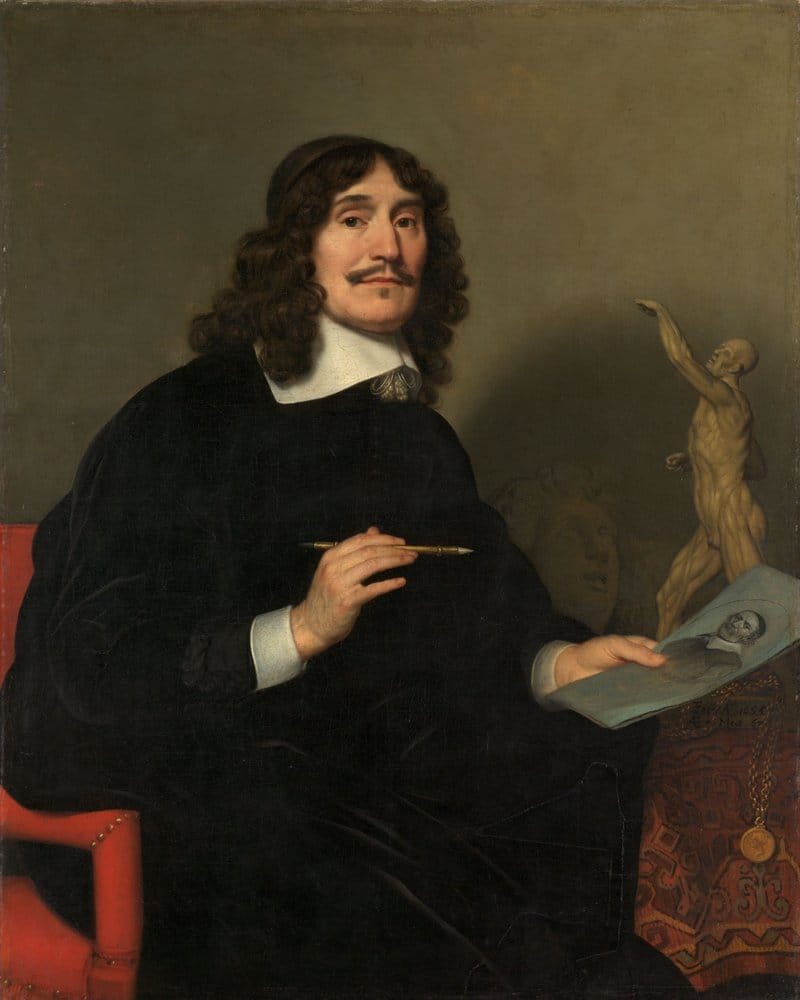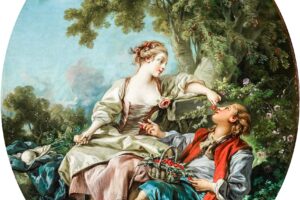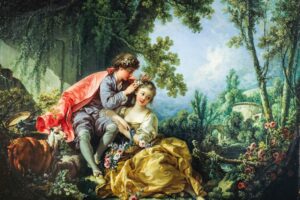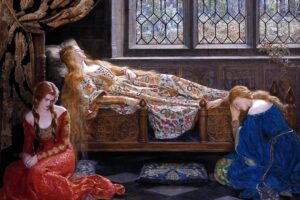Musical Group by Candlelight
Gerard van Honthorst, 1623 – Baroque
In the warm glow of a single candle, the world softens. Painted in 1623 by Dutch Baroque artist Gerard van Honthorst, Musical Group by Candlelight draws us into a circle of shared joy and harmony. A student of Caravaggio’s theatrical light, Honthorst became renowned for his candlelit scenes. Here, he captures not saints or solemn dramas, but a glowing moment of music, laughter, and companionship.
The Scene Before Us
Four young figures lean in close. Their bright faces are softly illuminated as they sing together, their voices seemingly rising from the open songbook at the center. One strums a lute, another gently conducts with her fingers. A feast sits half-finished on the table, but no one pays it much attention. All eyes and hearts are on the music. The candle’s flame, hidden behind the book, becomes the unseen fifth player—casting shadows, highlighting cheeks, igniting smiles.
The Deeper Meaning
This is not just a performance—it is communion. In an age before recorded sound, music was an act of presence. Friends gathered, hearts synchronized. Honthorst shows us how the candle binds them together, how the light creates intimacy and the song creates unity. There is nothing formal here, no courtly stiffness or religious restraint. This is joy, pure and young and flickering like the flame that lights it.
A Moment Caught in Time
Baroque art often aimed for grandeur, for awe. But here, the spectacle is small and personal. Honthorst invites us to listen with our eyes, to feel the warmth of closeness, to remember how shared art can pull people together. The painting is both theatrical and tender—an ode to evenings where music, light, and friendship were enough to fill a room.
About Artist

Gerard van Honthorst (1592–1656) was a prominent Dutch Golden Age painter and a key figure in the “Utrecht School” of painters who introduced the style of Caravaggio to the Netherlands. His travels to Rome, where he spent a decade, were formative. During his time in Italy, he was nicknamed “Gherardo delle Notti” (“Gerard of the Nights”) for his distinctive use of dramatic, artificial lighting in his scenes
The Influence of Caravaggio
Honthorst’s work is characterized by his masterful use of tenebrism and chiaroscuro, techniques he adopted from Caravaggio. He would often use a single, hidden light source, like a candle or torch, to illuminate a scene from within, creating a striking contrast between brightly lit figures and deep shadows. This created a powerful sense of drama and intimacy in his paintings. He was one of the few Dutch painters to achieve international fame during his lifetime, and his style influenced other artists, including Rembrandt.
Notable Works
Honthorst was highly sought after, painting portraits, genre scenes, and historical works.
“The Adoration of the Shepherds” (1622): A great example of Honthorst’s religious paintings. The infant Jesus is the source of light, casting a soft, divine glow on the faces of Mary, Joseph, and the surrounding shepherds. This work demonstrates his ability to apply his dramatic lighting techniques to sacred subjects, creating a powerful and intimate devotional scene.
“Musical Group by Candlelight” (1623): Also known as “The Concert”, this genre painting is a perfect example of Honthorst’s style. It depicts musicians and onlookers gathered around a table, with their faces and instruments vividly illuminated by a single, hidden light source. The theatrical poses and warm colors are characteristic of his work.
“The Merry Fiddler” (1623): This painting shows a fiddler caught in a moment of lively performance, with his face and hands dramatically lit. The subject and lighting are both characteristic of the Caravaggist influence on Honthorst, celebrating a common, everyday figure with a sense of energy and spontaneity.



